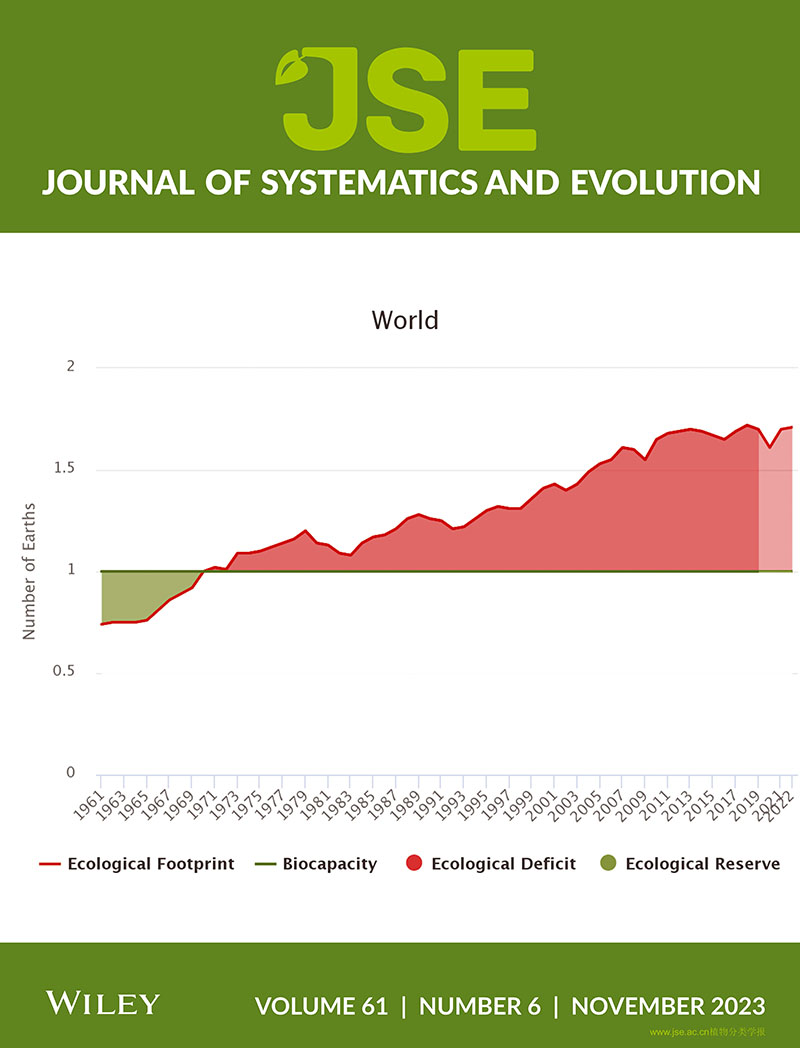Table of Contents
-

Volume 61 Issue 6
Cover illustration: Humanity’s ecological footprint versus Earth’s biocapacity in “number of Earths” equivalents. Persistent overshoot, i.e., human demand on nature exceeding what the biosphere can renew leading to ecological deficits, is exacerbating all the five drivers of biodiversity loss. See Raven et al., pp. 949–956 in this issue.
Picture by courtesy of Global Footprint Network.
Editors-in-Chief
Song Ge
Jun Wen
Song Ge
Jun Wen
Impact Factor
3.7
JCR 2022 IF ranking: 60/238 (Plant Sciences, top 25%, Q2 quartile)
Journal Abbreviation: J Syst Evol
CN: 11-5779/Q
Frequency: Bi-monthly
Journal Abbreviation: J Syst Evol
| ISSN: | 1674-4918 (Print) 1759-6831 (Online) |
Frequency: Bi-monthly

Scan to view the journal on your mobile
device
device

Scan to follow us on WeChat







